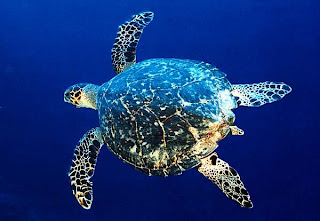Meru Betiri National Park has a varied topography reaching from a plain coast to highlands with an altitude of almost 1,200 meters. The tallest mountains within the park are Mount Gamping (538 m), Mount Butak (609 m), Mount Sukamade Atas (801 m), Mount Gendong (840 m asl), Mount Mandilis (844 m) and Mount Betiri (1,192 m). The topography along the coast is generally hilly to mountainous. There are only few sandy plain coasts, most of them located in the west, such as Rajegwesi Beach, Sukamade Beach, Permisan Beach, Meru Beach and Bandealit Beach. Some rivers across Meru Betiri NP are Sukamade River, a perennial river, Permisan River, Meru River and Sekar Pisang River that flow to the South coast.
The Meru Betiri area is influenced by monsoon wind. During November to March, the westerly wind brings rainfall to the area, whereas the dry season occurs during April to October. The average annual rainfall is between 2,300 and 4,000 mm, with 4 dry months and 7 wet months in average
FLORA & FAUNA
As a result of its diverse topography, Meru Betiri NP contains five distinct vegetation types:
- Coastal vegetation, found around Sukamade Bay and Meru Bay. This vegetation includes the Barringtonia asiatica, Calophyllum inophyllum, Hibiscus tiliaceus, Terminalia catappa, and Pandanus tectorius.
- Mangrove vegetation, found at the eastern side of the Rajegwesi Bay as the outlet of Lembu and Karang Tambak Rivers, Meru Bay and Sukamade Coast. The dominant vegetations are Rhizophora, Avicennia and Bruguiera. At the outlet of the Sukamade River, there is Nypa fruticans.
- Swamp vegetation, found at the back of the mangrove forest of Sukamade. Some tree species here are Manilkara kauki, Gluta renghas, Alstonia scholaris, and Sterculia foetida.
- Lowland tropical rain forest, including among others tree species of Pterospermum, Tetrameles nudiflora, Ficus variegata, Diospyros cauliflora, Aglaia variegata, Dracontomelon mangiferum, Bischoffia javanica, Dysoxylum amoroides, Gossampinus heptaphylla, Litsea, and Plectocomia elongata.
- Rheofit, found in the wetland areas, such as at the Sukamade area. The dominant vegetation species here is the Saccharum spontaneum
The park provides habitat for many other protected animals, including 29 species of mammal and 180 species of bird. Among them are
- Banteng (Bos javanicus),
- Panther (panthera pardus),
- Wild boar (Sus scrofa)
- Long-tailed Macaque (Macaca fascicularis)
- Dhole (Cuon alpinus)
- Javanese Flying Squirrel (Iomys horsfieldii) ,
- Leopard Cat (Prionailurus bengalensis),
- Javan Muntjac,
- Green Peafowl (Pavo muticus).
 |
| Banteng (Bos javanicus) |
 |
| Panther (panthera pardus) |
 |
| Leopard Cat (Prionailurus bengalensis) |
 |
| Wild boar (Sus scrofa) |
 |
| Dhole (Cuon alpinus) |
 |
| Long-tailed Macaque (Macaca fascicularis) |
 |
| Green Peafowl (Pavo muticus) |
 |
| Javan Muntjac |
The beaches of the park provide nesting ground for :
- Leatherback Turtles,
- Hawksbill Turtles,
- Green Turtles,
- Olive Ridley Turtles.
 |
| Green Turtles |
 |
| Hawksbill Turtles |
 |
| Olive Ridley Turtle |
 |
| Leatherback Turtles |
Meru Betiri National Park is known as the last habitat of the Javan Tiger (Panthera tigris sondaica) which is now considered extinct, with the last sighting having been recorded in 1976.
 |
| Panthera tigris sondaica |
The Meru Betiri Forest area was first appointed as a protected forest by the Dutch Colonial Government in 1931. In 1972 the Meru Betiri Protected Forest (500 km²) was appointed as a wildlife sanctuary, prioritized for protecting the habitat of the than endangered Javan Tiger. In 1982 the sanctuary was expanded to its current extent of 580 km² including a marine area of 845 ha. In 1982 the sanctuary was declared a National Park, which finally has been designated as such in 1997.
MYSTERY OF HUMAN DWARF
Besides the beauty of natural charm, the Meru Betiri National Park holds a mystery of human existence that it seems dwarfed by the community is often seen around this place. until now, the mystery of human existence is still studied dwarf.
The story of human midgets Meru Betiri National Park has long been known to the surrounding community. mini man they call it by name siwil = si wong secuwil (meaning: the little guy.) "We have been carrying 45 people around the park residents who witnessed their existence," said Chief Hall Meru Betiri National Park in Jember, Siswoyo. According to him, the news of human existence that has been frequently heard the mini park officials since last year, but this time there are new discoveries in their footsteps and successfully immortalized by the camera.
37 cases have ever encountered on the existence of human society is stunted. They are known to interfere with a number of fishermen or fishing around the estuary by way of taking the fish community around the forest. "The trail there and photographed by a photographer of nature lovers on February 13, 2003," he said. High human dwarf is estimated at 80 cm, foot length from heel to thumb around 9.7 cm and 3.2 cm wide footprints.
Regarding the reported presence of a human dwarf wandering around the estuary of the river and beaches in the area Meru Betiri, Ir. Siswoyo claim still could not record the existence of man. Four automatic camera deliberately placed in the vicinity residents who have passed siwil, but none succeeded mengabadikannya. Currently, the Meru Betiri national park has been installed 14 devices trap photos in the corners of the forest, but their existence has not been recorded.



daftar sabung ayam
BalasHapusBesides the beauty of natural charm